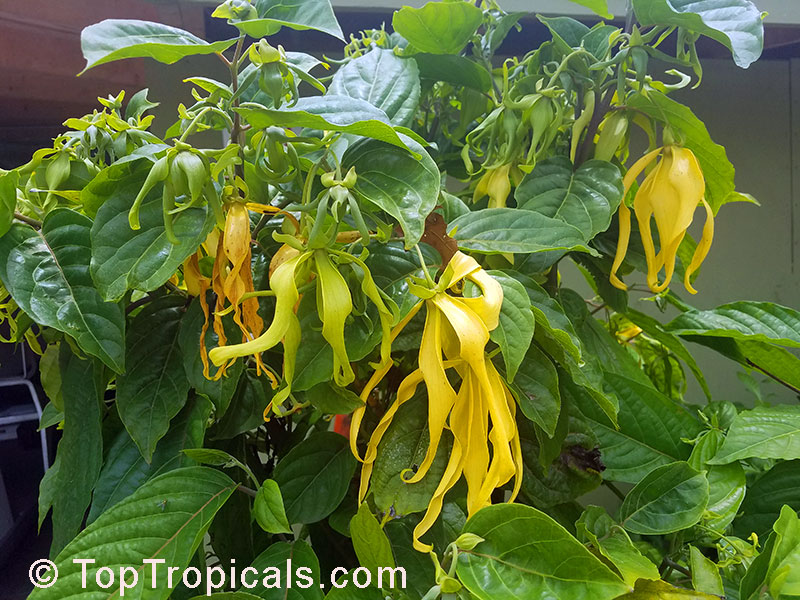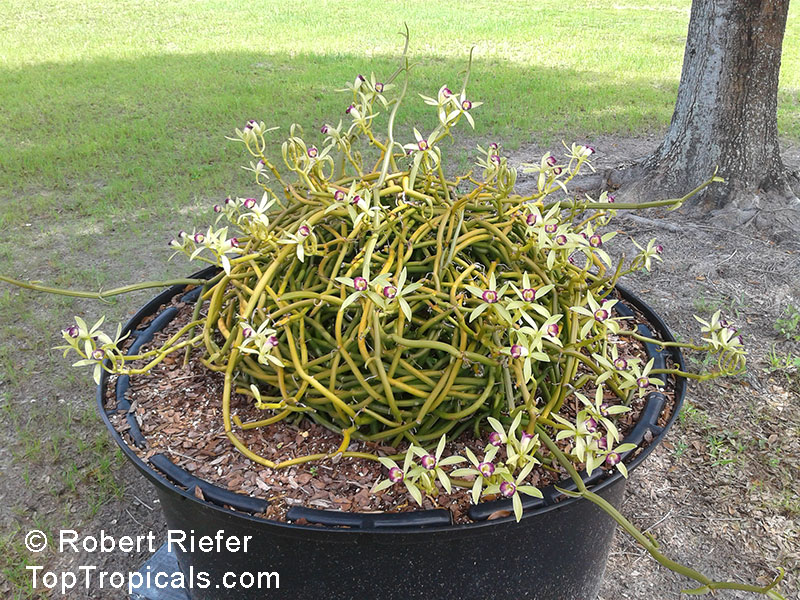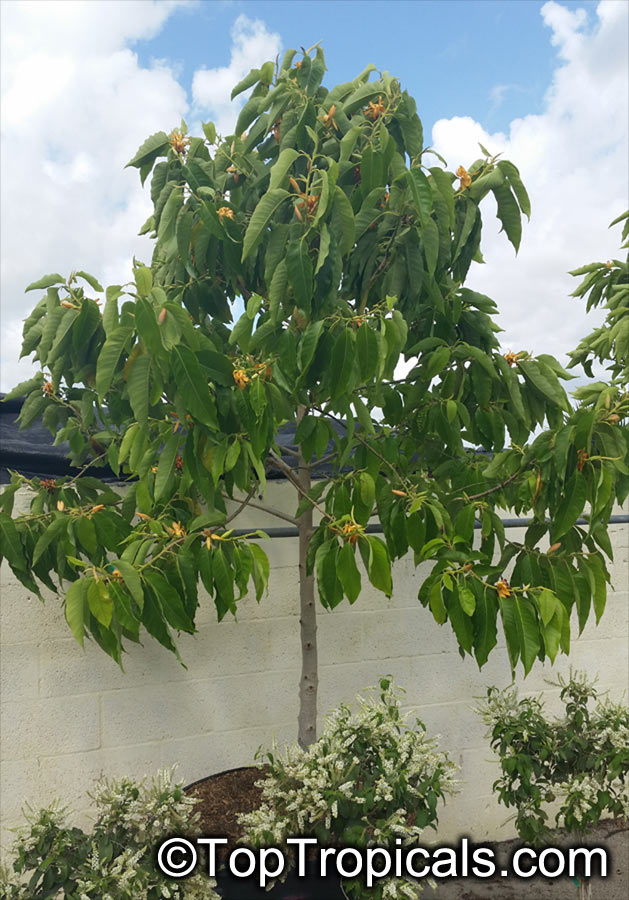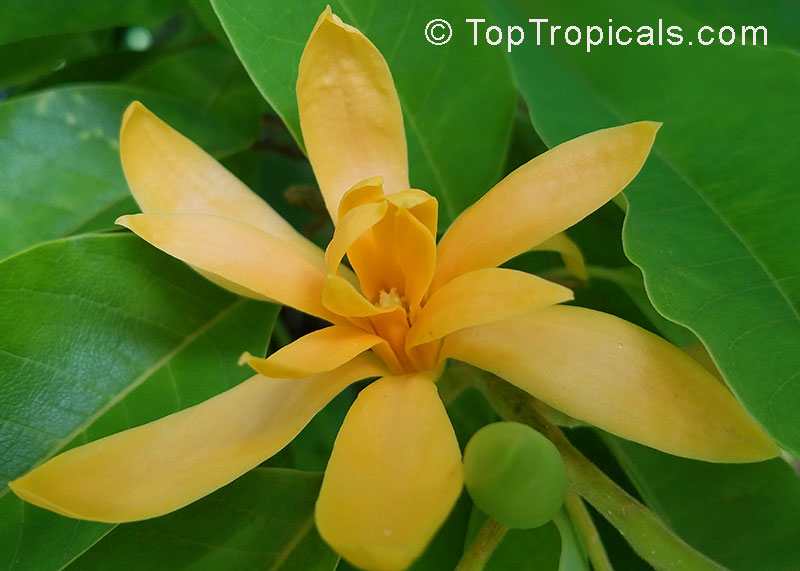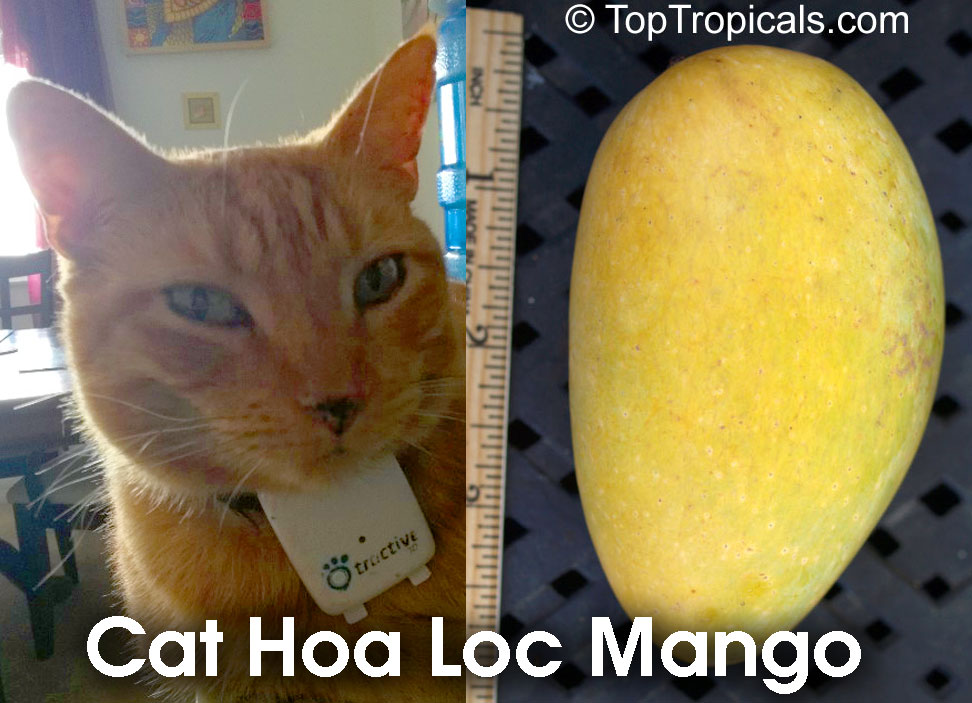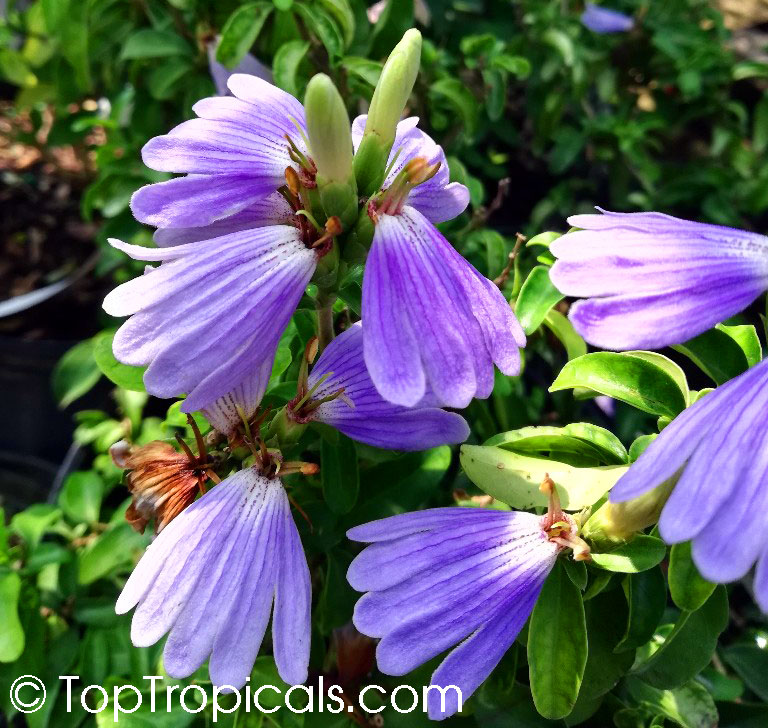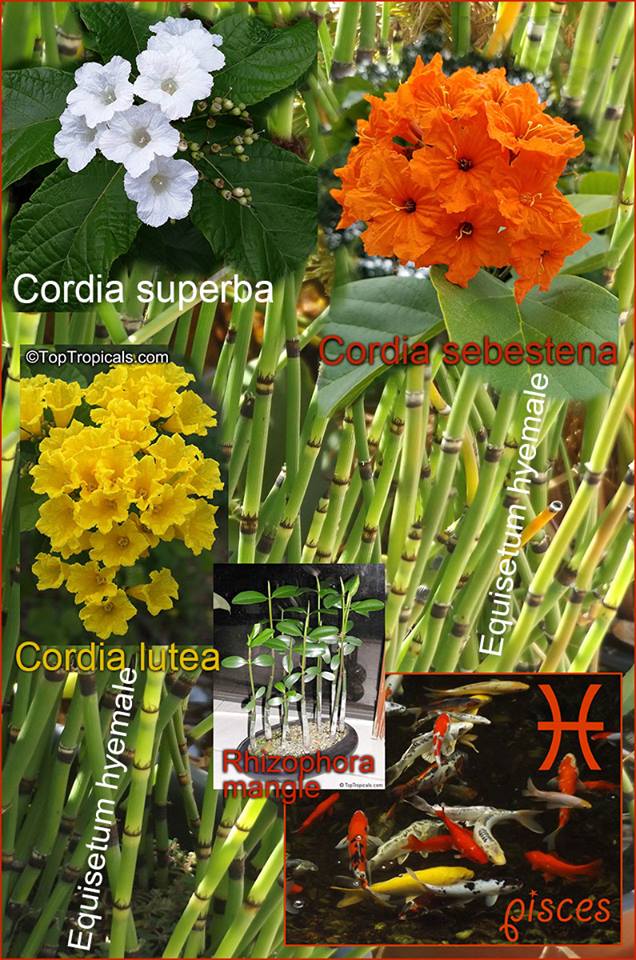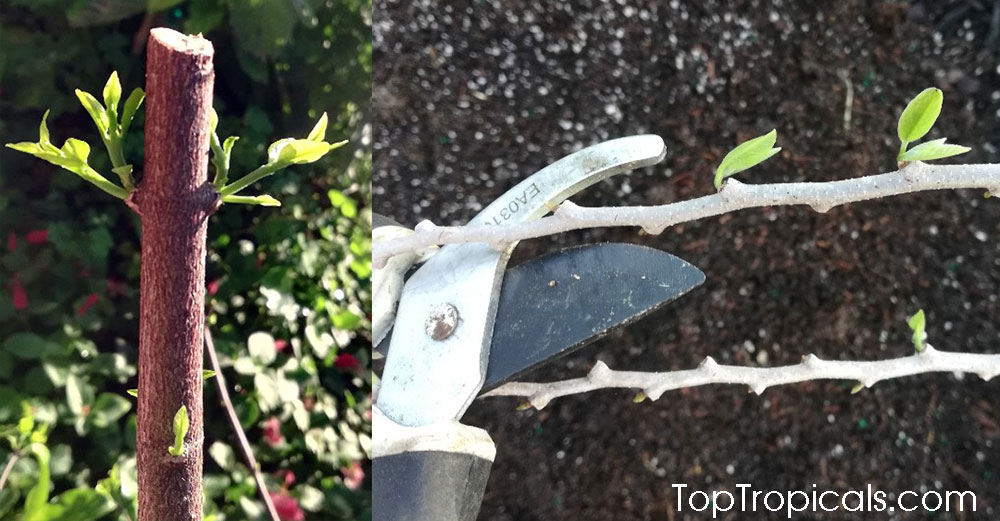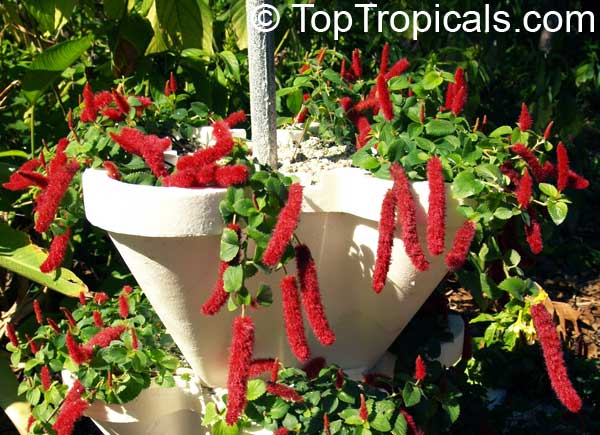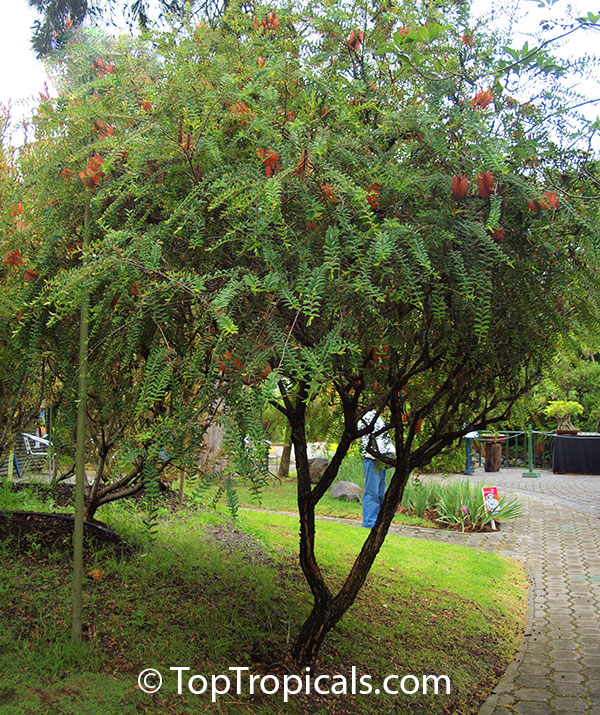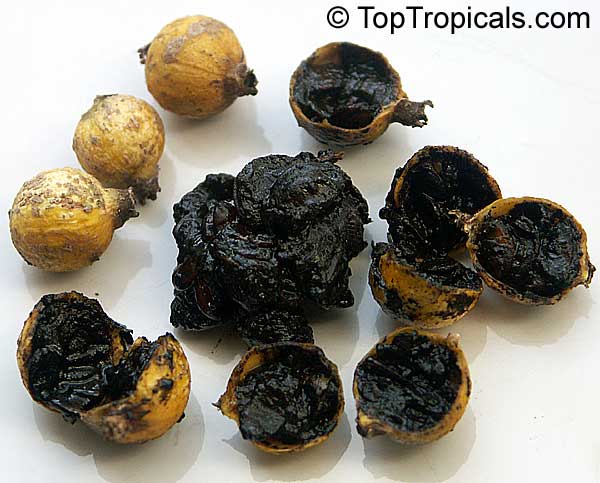Garden Blog - Top Tropicals
Date:
Fertilizing Ylang Ylang
Q: What fertilizer should we be using for ylang ylang?
A: Ylang Ylang is a free-flowering tropical plant that requires regular
feeding during active growth period (March through November in Florida). We use balanced granulated fertilizer that contains micro-elements. Apply once a month 1 tsp per 1 gal of
soil. For in-ground plants, 1/2 cup once a month.
We also apply additional micro-element treat SuperFood as foliar spray which dramatically increases
growth rate and promotes flowering.
Check out our fertilizers, plant boosters, and garden supplies:
Date:
RARE Featured plant, finally in stock!
Vanilla dilloniana - Leafless Vanilla Orchid
Very rare, collectible and extinct species! This plant propagated at TopTropicals nursery from Robert Riefer's unique specimen, the biggest potted specimen in the World, grown in 100 gal pot, originated in 1927, awarded in 2011 with CHM certificate of Horticultural Merit by American Orchid Society. Leafless Vanilla Orchid is amazing exotic vanilla that forms a multi-branched, leafless vine reaching lengths up to 15 ft. The light green flowers are similar to Vanilla barbellata but the petals and sepals are longer and the fluted lip is a deep reddish-purple with a yellow crest. Vanilla dilloniana is distributed throughout the West Indies and had been reported on the banks of the Miami River in South Florida. Vanilla dilloniana is a very rare species and considered vulnerable, endangered across its range. Pieces of plants from the original colony have been shared and may be found in local collections.
See the .
Date:
Champaca tree during Spring
Q: The Joy Tree that I purchased from you is going fine but the leaves have brown tips that shriveled up. How can I avoid this?
A: All Magnolias prefer rich and moist soils. These are some
useful tips for growing Magnolia champaca:
- when planting in the ground, dig a big hole and replace sandy old
soil with a rich organic mix containing compost and lots of peat moss to retain
moisture.
- water daily for the first few months until the tree is
well-established and root system is large and strong.
- use a large amount of mulch around planting
- remember that during springtime (especially March through May)
champacas go through the semi-deciduous stage and lose a lot of leaves. Sometimes
the tree may start looking drying out - all the sudden, overnight. Give it a
few weeks and you will notice new light green re-leafing that will dress up
your tree when the time comes.
Check out Champaca trees:
Date:
Featured plant. Mango Hoaloc, Cat Hoa Loc
Cat Hoa Loc Mango
Grafted Mango (Mangifera indica) - Hoaloc, Cat Hoa Loc... It is very
rare, Exotic mango variety from Vietnam. The fruit is fiberless, oval yellow,
with very thin seed. It is a rare, collectible variety.
Among Vietnamese mango cultivars, Cat Hoa Loc is the most popular cultivar
because of good appearance, texture, taste, and flavor. Its production ranks
the first among commercial mango cultivars in Vietnam.
It is known as one kind of the most famous mango in the Mekong Delta
and one of the favorite fruit by appealing color, taste and high nutritional
value. Hoa Loc mango became the reputation brand not only in Vietnam but also
in the world. With elongated shape, bright yellow skin when ripe, bright
yellow flesh, flesh architecture firm, smooth and low in fiber, are very tasty and
fragrant.
The Vietnamese Government supports the expanding of the production area
for Cat Hoa Loc mango. At the mature green stage, Cat Hoa Loc mango fruits
usually turn to full ripening within 4-5 days thereby limiting distribution
and marketing options.
So the best way to taste this delicious rare variety is to grow your own!
Date:
Surprising Violet fragrance of the Blue Lips
By Mark Hooten, the Garden Doc
 A few months ago while working among the bewildering array of great plants
we grow, I began to notice wafts of a very unique fragrance. The scent seemed
somehow familiar, yet for the longest time, I was unable to determine what
kind of plant it was emanating from. I knew it was somewhere toward the back
of the growing houses but just couldn't determine its source. The fragrance is
very distinct and wonderful and could be detected over a large area... That
scent is hard to describe, however, I would suggest a mixture of Lavender and
old-fashioned florist violets...
A few months ago while working among the bewildering array of great plants
we grow, I began to notice wafts of a very unique fragrance. The scent seemed
somehow familiar, yet for the longest time, I was unable to determine what
kind of plant it was emanating from. I knew it was somewhere toward the back
of the growing houses but just couldn't determine its source. The fragrance is
very distinct and wonderful and could be detected over a large area... That
scent is hard to describe, however, I would suggest a mixture of Lavender and
old-fashioned florist violets...
Then, a few weeks later, I happened to lean over a grouping of Sclerochiton plants, and THERE IT WAS!!! This might be the first flowering plant I have encountered which I might rate a full 10...
Date:
Pisces Zodiac lucky plants

Pisces- 2/19 -
3/20. As a WATER sign ruled by both Jupiter and Moon (and Neptune, that
was not discovered until 1846, after the plant correspondences were
established; Neptune is considered a "higher octave" of the Moon), Pisces plants are
often large but hard to find, and may grow near the ocean. The most healing
plants for Pisces are those that strengthen the immune system or have an
antibacterial effect. Pisces plants may also catalyze expanded states of awareness
and be helpful in dream work.
Herbs connected to Pisces are ruled by its former ruler, the Moon
(Neptune, the current ruler, was not discovered until 1846, after the plant
correspondences were established; Neptune is considered a “higher octave†of
the Moon). Diseases of Pisces have traditionally included psychotic disorders,
various forms of substance addiction, lung diseases such as tuberculosis, and
ailments of the foot; contemporary herbalists also add immune system
diseases. Pisces is strengthened by rosemary's ability to promote an aura of
centered grounding. This protective herb helps strengthen boundaries and cultivate a
closer connection to the physical realm.
Pisces Zodiac
lucky plants: Water lily, Lotus, Clematis, Wisteria, Lisianthus, Brunfelsia, Echinacea, English Lavender, Rosemary, Coconut palm, Cranberry, Clove, Coccoloba, Sea Oats, Mangroves, Ochrosia, Aquatic plants, Colocasia, Alocasia, Aralia, Ficus trees, Banyan, Peepal, Banana, Mango, Mimosa, Olive, Anise, Vilca and Yopo, Kava-kava, Nutmeg, Anthuriums, Eucalyptus, Bauhinia,
Clusia, Caesalpinia, Callistemon, Bucida, Cassia fistula, Cordia, Calabash, Lipstick palm, Delonix, Elaeocarpus, Erythrina, Fatsia, Guaiacum, Mahoe, Koelreuteria, Kopsia, Macaranga, Pandanus, Peltophorum, Psychotria, Banesteriopsis, Tabebuia.
For other signs information, see Plant Horoscope Page.
Date:
To prune or not to prune?
Q: We had a few nights with light frost and some of my tropical plants look sad, lost all leaves. I scratched the bark and it is green inside. Should I prune back all branches that look dead?
A: Never prune during winter time, even if some branches look dead. There is a chance you will be surprised by Spring when they sprout new leaves. Be patient and postpone all pruning until active growth starts, then cut off only damaged part, approximately 2" above new growth.
Date:
Featured plant. Acalypha pendula, Dwarf Chenille Plant
Strawberry Firetails, Dwarf Cat Tails, Kittens Tail...
Everybody wants this plant! Acalypha pendula, Dwarf Chenille Plant gets
its common name from the fuzzy plumes of tiny, foxtail-shaped bright red
flowers that trail above a thick mound of small, serrated leaves. Given enough
light, this plant blooms nearly year-round! The blossoms that begin as wispy
buttons and elongate into fuzzy cones. At maturity, they become 3-4" long
streamers.
A spectacular plant for a hanging basket, container or ground cover, it
is heat tolerant, great for both hot Southern landscapes or as an easy
houseplant, providing bright light.
Place this unusual house plant on a pedestal stand or pot it in a hanging
basket to show off those eye-catching fuzzy blooms.
This is a dwarf plant that stays small and doesn't need pruning. It's
naturally bushy, so you don't have to pinch its growing tips to get it to
branch out.
A favorite with children, and cats too!
Date:
Australia Planting 1 Billion Trees To Fight Climate Change
Australia plans to plant 1 billion new trees to fight climate change, by
the year 2050. That is a lot of trees and is the first real effort the
country has made toward combating climate change. The only real problem is finding
enough space to plant that many trees...
A billion trees is a billion trees, and even with a team of 30,000
people planting a tree per day for the next 31 years, the final tally would still
only be 339,450,000 trees. Australia will need a tree army to get that many
trees planted by 2050... Read the whole story...
How about planting just one tree today and save the World one step at a time?
On the photo: Callistemon, Australian native tree.
Date:
Featured plant. Randia formosa - Blackberry jam fruit
Randia formosa - Blackberry jam fruit
This unique compact plant, perfect for container culture, combines features of a fragrant flower and tasty desert fruit. Kids love it! Originally from Central and South America, this rare tropical small evergreen tree bears fruit which tastes like fresh Blackberry jam. Many claim that it's even better than preserves. Closely related to the gardenia, its flowers are sweetly fragrant. This relatively hardy tropical has attractive foliage and can be grown in a container as well as in the ground. The Randia formosa (or Rosenbergiodendron formosum) produces as many as 25 to 30 fruits at a time. Since it blooms for a few months in the fall and winter, fruiting and flowering can be enjoyed when many other plants are dormant. Large tubular white flowers that attract nocturnal moths... Read more about this plant...
